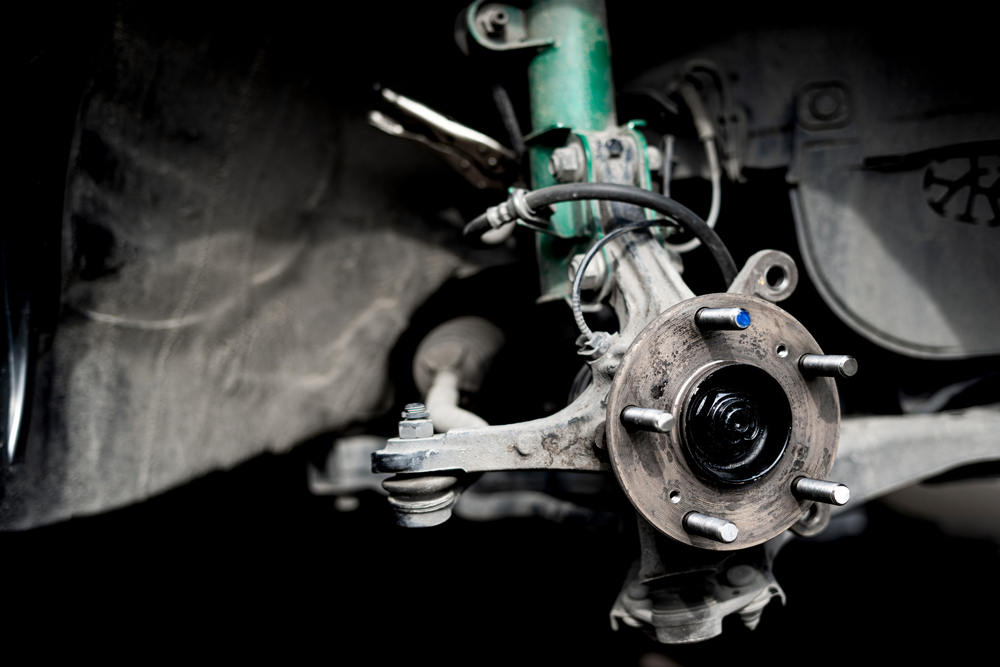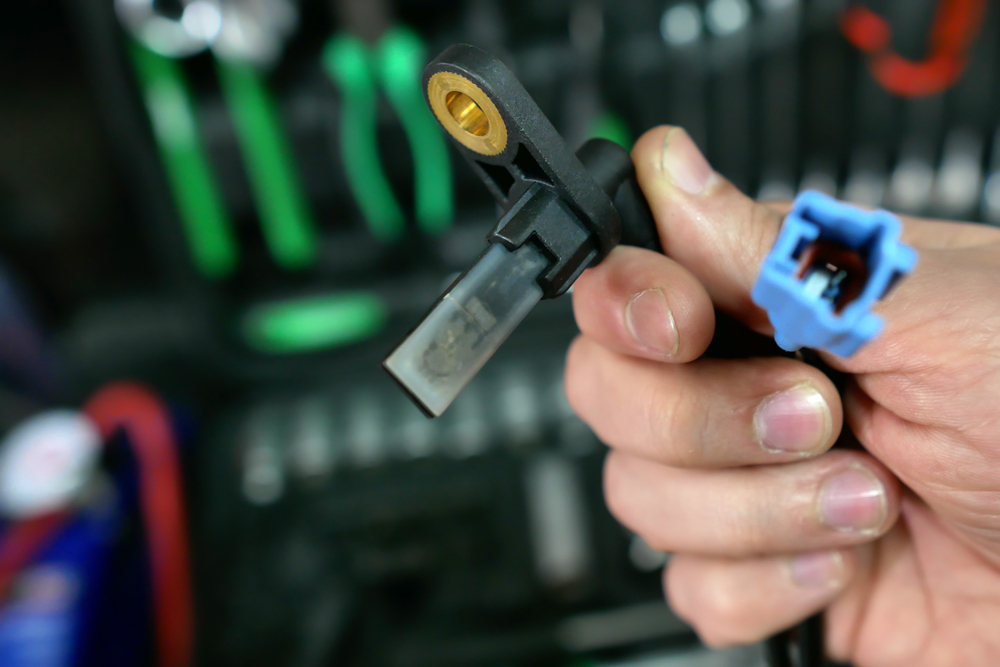ABS is an anti-lock wheel system that allows you to maintain control of the vehicle in the event of sudden braking. It thus prevents the wheels from slipping and therefore contributes to the safety of the car. ABS has been compulsory in Europe since 2004. It works using sensors, a computer and a hydraulic regulation system.
What is ABS?
The meaning of ABS comes from the German Antiblockier system , which means anti-lock wheel system . It equips rolling vehicles such as cars of course, but also planes and motorcycles. ABS is a braking assistance system that aims to prevent the wheels from locking during heavy or sudden braking.
In the event of emergency braking, ABS allows the driver to maintain control of their automobile . Indeed, locking the wheels in such a situation would cause them to slide on the road.
To function, the ABS system uses sensors. There is an ABS sensor on each wheel of your car . It allows a computer to know the speed of the wheel. If it detects that it is blocked, it allows it to start turning again.
For this, ABS also relies on a hydraulic brake pressure regulation system . During emergency braking, the computer determines that the braking pressure is not adapted to the grip and the ABS system pumps brake fluid to lower this pressure in order to unlock the wheel.
On the most recent cars, an Emergency Brake Assist (AFU) system complements the ABS. It compensates for the motorist’s lack of responsiveness in triggering and maintaining the car’s braking.
Since when is ABS mandatory?
The research that led to the creation of ABS began in the early 1960s and the first commercialization of an electronic anti-lock braking system took place in the 1970s. From now on, ABS is mandatory on all new car marketed in Europe since 2004 .
How do you know if you have ABS or not?
There are several ways to tell if a vehicle is equipped with ABS:
- According to European regulations, all cars marketed on European territory since 2004 are equipped with ABS;
- The ABS pump is located near the brake master cylinder;
- An ABS sensor is located on each wheel of the vehicle;
- If you have it in your possession, the vehicle’s maintenance booklet normally indicates the presence or absence of ABS;
- When you turn on the ignition, the ABS warning light is one of the warning lights that comes on momentarily on the dashboard.
What to do when the ABS light comes on?

The ABS warning light is orange. It generally represents the letters ABS in the middle of a circle framed by two parentheses. When you turn on the ignition of your car, it is normal for the ABS light to come on at the same time as the others. But it’s supposed to turn off quickly, like the other lights.
If the ABS light comes on while you are driving or stays on after you turn on the ignition, it indicates a problem with your anti-lock braking system. Most often the problem is caused by:
- A faulty ABS sensor ;
- An electrical problem .
It is also possible that the ABS hydraulic unit or the electronic computer is defective, or that their power supply is faulty.
In all cases, you need to carry out a self-diagnosis to determine the origin of the problem and act accordingly. If the fault comes from an ABS sensor, simply replace it. But in the event of a malfunction of the hydraulic unit or the computer, it will have to be changed and the bill will increase significantly.
ABS light coming on and off: what to do?
An ABS light that turns on and off often indicates an electrical problem . This can come from the sensor cables, from the sensors themselves if they are dirty, but also from the ABS unit or the computer. You must check the power supplies to the ABS system and carry out an auto diagnosis with a professional mechanic.
Can you drive with the ABS warning light on?
If your ABS light is on, it indicates a malfunction in the system and therefore the system has stopped. In other words, you do not benefit from anti-lock wheel locks . In the event of emergency braking, the ABS will therefore not allow you to maintain control of your vehicle, which is obviously dangerous. So react as quickly as possible if your ABS warning light comes on.
How do you know if an ABS sensor is out of order?

ABS sensors are located on the wheels of your car and play an essential role in the system since they are used to indicate a locked wheel to the computer. If there is a problem with your sensors, the ABS can no longer work correctly. Here are the symptoms of an HS ABS sensor :
- The ABS light is on on your dashboard;
- Your wheels lock during heavy braking;
- The car lacks stability in wet driving conditions or on ice;
- The brake pressure is not regulated correctly.
A defective ABS sensor will also cause an associated fault code to be displayed during an auto diagnostic.
How to test an ABS sensor?

It is possible to test the operation of an ABS sensor if your light indicates a system fault. With a multimeter , you can check the voltage of the electrical circuit between the sensor and the computer. The measurement is done in Millivolts mode for precise results. The voltage should increase as you turn the wheel. Double check all polarities.
How is the ABS sensor cleaned?

If your ABS light comes on, one of the sensors may be the cause. Located on the wheels, these often collect impurities which prevent their proper functioning. Cleaning the ABS sensor then allows the system to be restored without difficulty or changing parts.
Material :
- Brush
- Soapy water
- Penetrating oil (type WD-40)
- Cloth
- Toolbox
Step 1: Place your car on jack stands

Start by assembling your car to be able to work on the ABS sensors, located behind each wheel. Raise your vehicle using a jack and place it on jack stands to operate safely. You should have a few free centimeters under the wheel. Remove its nuts and remove the wheel.
Step 2: Disassemble the sensor

The ABS sensor is located behind the wheel . You can spot it thanks to the wire that starts from the wheel and goes up to the sensor. Remove the bolts that secure it to the suspension. They can stick because of dirt: in this case, spray penetrating oil and let it act for a few minutes.
Remove the ABS sensor with pliers, wiggling up and down. Do it gently so as not to damage it, with circular movements.
Step 3: Clean and reassemble the sensor

To clean your ABS sensor, use a microfiber cloth and soapy water. If necessary, you can also use a brush to remove rust and dirt. In any case, do not use any chemical products as this risks damaging the sensor.
Also clean the ABS sensor housing by spraying compressed air which will remove any dirt that may be lodged there. Also give it a quick brush to remove the rust. You can then reassemble the sensor and replace its bolts.
Then reassemble the wheel and its own bolts. Repeat the operation on each of the other ABS sensors then lower your car and switch on the ignition. If the ABS warning light still comes on, you will need to carry out a self-diagnosis to find the cause of the fault.
Now you know what ABS is and how it works! You understand: the anti-lock wheel system plays an important role in your safety. Therefore, it is important that it works properly. If the ABS warning light comes on on your dashboard, do not delay in going to the mechanic.